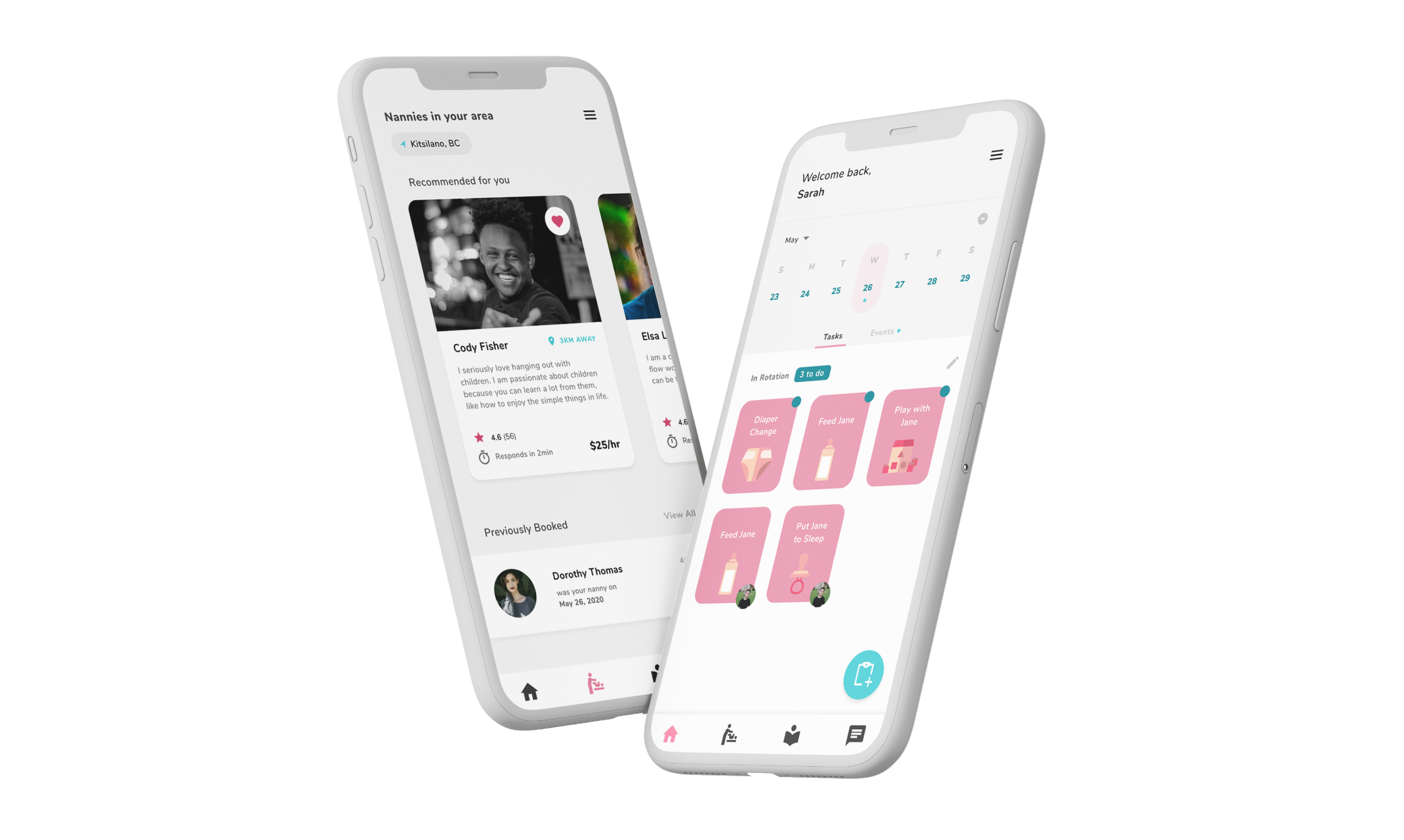Amae
Amae (‘甘え’), Japanese for the closeness between parent and child, is a peer to peer platform for new and busy parents to find the childrearing resources they need and keep track of their new tasks as parents. Its goal is to promote communal parenting that is typically more common in Eastern cultures as a solution to the expectation modern parents face when juggling work and parenthood. This assignment was a semester long project for an upper level user interface course that resulted in a prototype and product website.
Issue
Research showed that there is an unequal distribution of labour distributed between new parents. Often, mothers are still considered the primary caregiver for newborns even if both parents are working to support the family. Mothers were frequently burning out from juggling child-care challenges with work responsibilities. In many instances, burnout (especially for mothers) occurs because there’s not enough support. About 42% of parents surveyed by UrbanSitter say they do not currently have child care, while a third are reliant on family to watch their children while they work.
Findings
To understanding our target audience, we decided to conduct a brief online survey on a popular online forum dedicated to postpartum mothers. It gave us important insight into the challenges new parents face as well as their current avenues of assistance. This was a valuable step for us to cultivate a more sophisticated understanding of the needs and goals of our future users.

Solution
We decided to build a one-stop application that addressed the issues highlighted by our primary and secondary research. Following communal parenting principles, Amae would give parents the ability to:

Features
We decided to build a one-stop application that addressed the issues highlighted by our primary and secondary research. Following communal parenting principles, Amae would give parents the ability to:

- Taskboard
- Nanny
- Learn
The taskboard, the application’s primary dashboard, helps parents to schedule important events and assign frequently occurring tasks to their partners and/or guardians. This features also gives parents the opportunity to utilize the task-outsourcing feature by allowing them to easily connect with nannies whom they may want to assign tasks to should they be interested in hiring one.
The nanny feature allows parents to surf through available nannies in their area. In a single tap, parents are able to learn more about nannies they are interested in by browsing their profiles for reviews and ratings. Parents can message nannies right away if they are interested, either directly from the taskboard by selecting a specific task that they need assigning to, or through the nanny page where parents can browse through a list of nannies in their area.
The learn feature provides new parents with relevant and valuable child-rearing resources. One of the issues that we discovered was the abundance of information for child-rearing, making it difficult for new parents to find information that is both credible and reliable. The learn feature is made up of two parts: an page where writers vetted by Amae can post their articles and a discussion forum for parents to start a conversation about a particular topic of interest. Amae opens up this avenue for new parents to connect with other parents in the same boat, as well as more experienced ones.
Interaction Patterns
One common thread across the application is the use of modules that can be scrolled horizontally. I found that this interaction pattern allowed users to see more details in each module, more so than a standard list format with vertical scrolling. This was particularly useful in creating the nanny cards. I took inspiration from dating apps like Tinder where users are taken through a selection journey one individual at a time. I found that a horizontal scroll interaction helped parents to connect with nanny profiles more by narrowing the user’s attention to roughly 3-5 nannies in a single glance. Horizontal scroll was also useful in other features of the app, such as learn. This use of two dimensions helps users by showing a variety of options without making them visit separate category pages (selections from discussions and articles can be placed in one overview page, for example)

Style Guide
The modules in our application was inspired by Google’s Material Design, which uses more grid-based layouts, responsive animations and transitions, padding, and depth effects such as lighting and shadows. As for the colour scheme, we focused on creating a bright and vibrant palette with an iconic pink accent to convey a cheerful and light-hearted feel.

Overall, we wanted Amae to follow conventional mobile-application style guidelines so that it was easy for new users to learn the various interactions of the application, modelling the modularity of the application with the likes of Facebook, Instagram and Pinterest, some of the most commonly used applications amongst our target demographic.
Reflections
Developing Amae’s design, from the kinds of features it would have to the specific font-face we wanted to use, was a challenging but ultimately fulfilling process. I believe the most important takeaway from this project was the importance of empathy in the design thinking process. Creating an application for a demographic that I personally don’t identify with proved to be a challenge, which pushed me to delve deep into the resources that were available to me in order to have a more sophisticated understanding of the needs of our user.
 Link to the website
Link to the websiteLink to the Prototype
